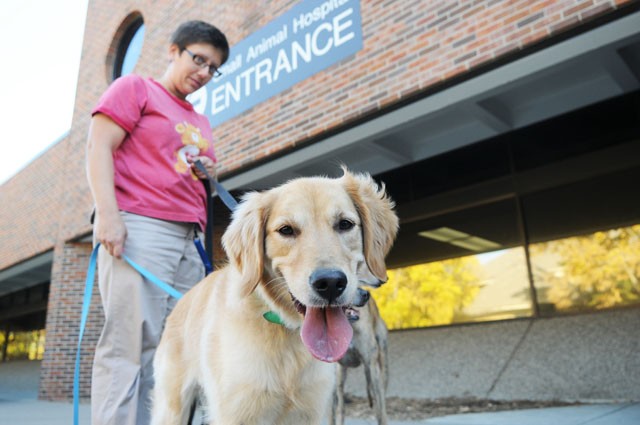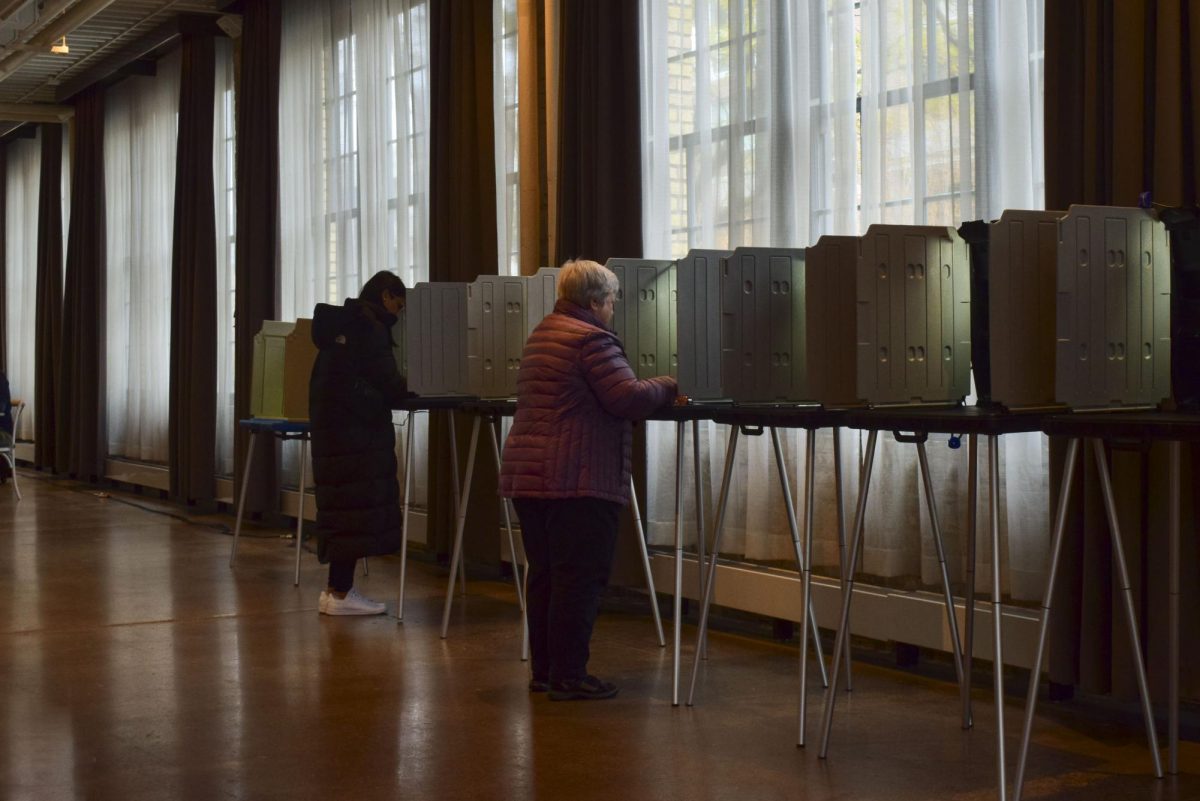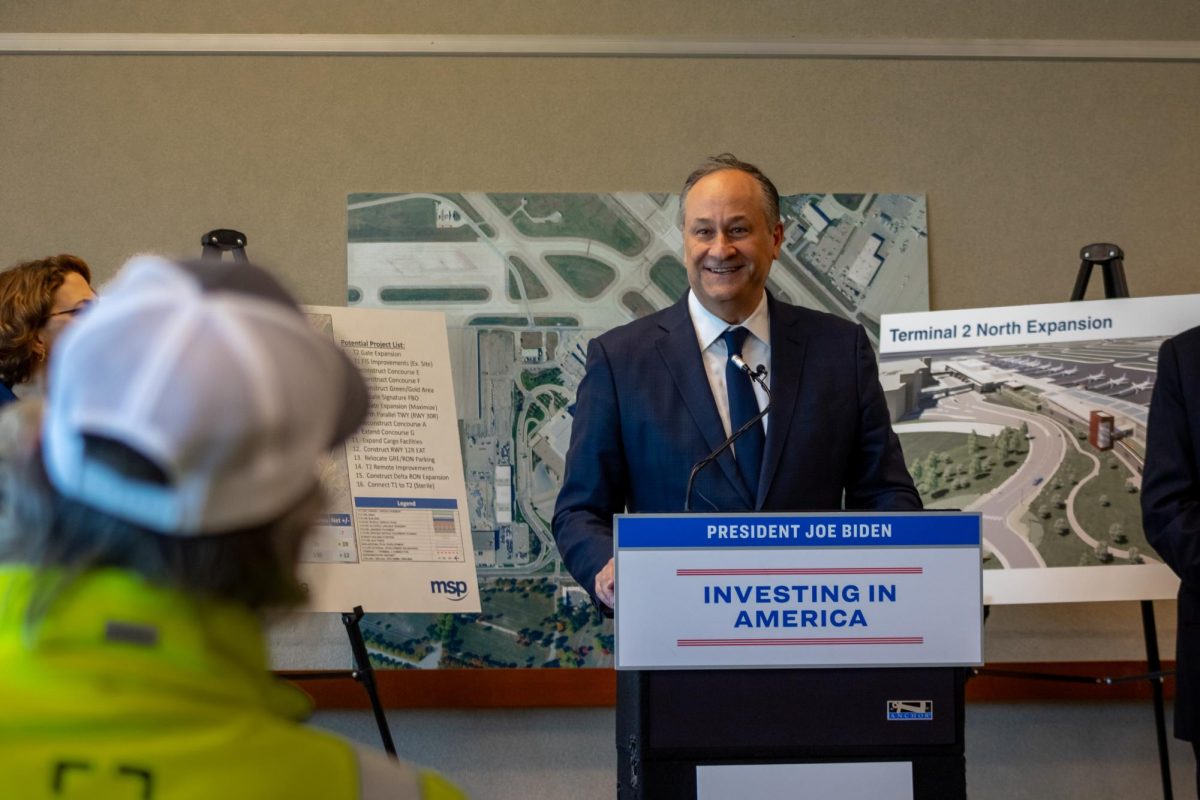There was a point in time when the University of MinnesotaâÄôs Veterinary Medical Center saw a lot more food animals than it does today.
Over time, food animals âÄî cattle, swine and poultry âÄî became a rare appearance at the VMC, as horses, dogs and other companion animals turned up in larger numbers.
Because of this decline, the VMC has moved away from employing food animal staff.
âÄúWe just donâÄôt have the same faculty, specifically in food animal medicine,âÄù VMC Director David Lee said. âÄúWeâÄôre much busier now with horses.âÄù
Following suit was a national decline in food animal veterinarians.
Seventy percent of 2010 graduates from all 28 veterinary medicine schools in the United States entered into companion animal practices rather than tending to food animals, according to an American Veterinary Medical Association survey.
The decline has many experts in the field worried about the future.
âÄúWe have serious concerns about whether or not we are going to be able to maintain what most people consider to be the safest food system in the world,âÄù AVMA spokesman David Kirkpatrick said.
The demand for food supply veterinarians is expected to increase by 12 to 13 percent between 2006 and 2016, according to the AVMA. The number of food supply veterinarians is projected to fall by 4 percent to 5 percent each of those years.
That may seem like a fairly innocuous number, but the geographic spread of food supply veterinarians has made it harder for them to pick up the slack, Kirkpatrick said.
These numbers are the lowest the nation has seen in 70 years, according to the AVMA, causing a major headache for experts in the field.
Another AVMA report states several counties have food animal populations of more than 100,000 and not nearly enough veterinarians.
In Minnesota, Blue Earth County may be the most severe. It has a food animal population of more than 555,000, but the county has only one practicing food animal veterinarian. Freeborn County is colored red in the report, indicating a dire problem. The county has a food animal population of 278,065 and only three food animal veterinarians. The ratio: more than 92,000 animals per practicing
veterinarian.
In recognition of the problem, Trevor Ames, dean of the UniversityâÄôs College of Veterinary Medicine, said that the college is working hard to help curb the decline.
Eventually the decline became significant enough that a number of national organizations identified four to five major issues that needed to be addressed, Ames, a former ex-officio on the Minnesota Veterinary Medical Association âÄôs board, said. âÄúThe concern was that we werenâÄôt attracting enough food animal students.âÄù
CVM went to work on addressing major issues and has since become the nationâÄôs leader in tackling those recommendations, Ames said.
The cost of veterinary school may have played a role in the decline of food animal veterinarians.
âÄúThe fact is that many veterinarians are graduating with an average of $130,000 in debt,âÄù Kirkpatrick said. Many graduates choose to work in urban areas, typically as companion animal veterinarians, because the pay is typically higher.
One major incentive CVM has implemented is a program called VetFAST âÄî the Veterinary Food Animal Scholars program âÄî which allows food animal students to complete their degree program faster than normal. Students can complete their pre-vet credits in three years instead of the typical four, enabling them to join the CVM and complete both degrees in seven years.
Ames said that the program has been successful and that it has included scholarships that may fund four years of a studentâÄôs education.
Another incentive is the number of unique training facilities offered by the college. The newest facility, a state-of-the-art dairy education center in New Sweden, Minn., is a one-of-a-kind teaching tool for students which houses more than 4,000 dairy cows. The center will reflect much more of a real-world experience, Lee said.
Also helpful to students is a loan forgiveness program the college runs in collaboration with the state, where the state pays back a portion of a debt if a student chooses a career in food animal medicine, Lee said. Kirkpatrick said Congress is currently considering a national version of the bill.
Experts agree that current efforts to reverse the declining trend have been helping, but there is still more to be done.
âÄúItâÄôs not something you can solve in a single year,âÄù Ames said. âÄúIt takes many approaches, and IâÄôm very proud of what our school has done.âÄù
Kirkpatrick said that the call for food animal vets in rural areas isnâÄôt going to taper off anytime soon.
âÄúThe mom-and-pop farm isnâÄôt dead,âÄù he said. âÄúThereâÄôs always going to be a need, whether weâÄôre talking about large or small operations.âÄù

Vet hospital technician Rachel Czachor takes staff dog Jada on her daily walk Wednesday on the St. Paul Campus. Recently, more veterinary students have gone into practice to treat companion animals instead of treating food animals, which include cattle, swine and poultry.
U takes on nationwide vet shortage
The College of Veterinary Medicine provides many incentives for food animal vets.
by Ashley Bray
Published October 14, 2010
0
More to Discover







